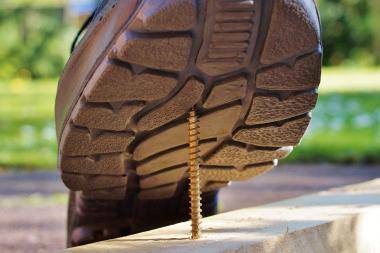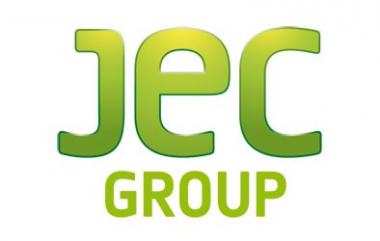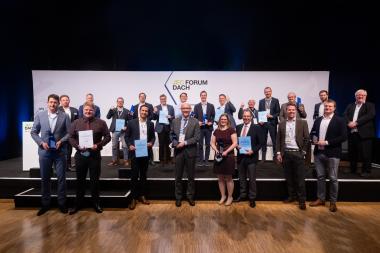SOEX und Mercedes-Benz AG retten Sicherheitsschuhe vor der Verbrennung
Bisher gab es bei Mercedes-Benz AG nur eine Lösung für aussortierte Sicherheitsschuhe: die Verbrennungsanlage. Rund 25 Tonnen Schuhe wurden bisher jährlich in einem Werk des Automobilunternehmens vernichtet. Das will die SOEX-Gruppe nun ändern und die getragenen Schuhe für Mercedes-Benz recyceln. Im Mai startete ein Pilotprojekt. Die ausgemusterten Sicherheitsschuhe werden auf dem Mercedes-Benz Werksgelände in Sindelfingen in insgesamt sechs Containern gesammelt und anschließend im SOEX-Werk in Wolfen recycelt.
Als zertifiziertes Recyclingunternehmen betreibt SOEX die weltweit erste Schuhrecycling-Anlage. So können wertvolle Ressourcen wie Gummi, Leder und Metall gerettet und Schuhe für die Wiederverwendung aufbereitet werden. Die Mitarbeitenden in Sindelfingen fordert Mereceds-Benz AG seit Mai daher auf: „Gib Deinen ausgemusterten Sicherheitsschuhen nun die Chance der Verbrennung zu entgehen und stofflich für neue Produkte wiederverwertet zu werden – mach den richtigen Wurf!“
22 Milliarden Paar Schuhe werden Jahr für Jahr weltweit produziert. Laut Hochrechnungen sorgt die globale Schuhindustrie jährlich für so viel CO2 wie ganz Deutschland. Das liegt auch daran, dass für die Produktion von Schuhen sehr viele Ressourcen eingesetzt werden, die nach der Nutzung nicht wieder in den Kreislauf zurückgeführt werden: Der Großteil wird nach dem Tragen im Restmüll entsorgt und landet in der Verbrennung, nicht mal fünf Prozent werden gesammelt und recycelt. Bevor SOEX die weltweit erste Schuhrecycling-Anlage in Betrieb nahm, galt das Recycling von Schuhen weltweit als unmöglich. Meist sind über 40 Materialien in Schuhen so fest miteinander verklebt, dass sie kaum voneinander zu trennen sind.
Die SOEX-Gruppe entwickelte gemeinsam mit dem englischen Partner In-Cycle und der französischen Firma Eco TLC die passende Anlage für das Vorhaben. In der Anlage werden Reißverschlussreste, Metallteile, Leder, Gummi und Stoffresten voneinander getrennt, um anschließend als Rohmaterial zur Herstellung anderer Produkte wiederverwendet zu werden.
Nun profitieret auch der Automobilhersteller Mercedes-Benz AG vom fortschrittlichen Schuhrecycling der SOEX-Gruppe. Der Vorteil beim Recycling von Sicherheitsschuhen liegt außerdem darin, dass ein Sicherheitsschuh aus lediglich vier Komponenten besteht und der Aufwand bei der Auftrennung dadurch sehr gering ist. Somit haben SOEX und Mercedes-Benz AG eine einfache, aber nachhaltige Lösung gefunden, um Arbeitsschuhe sinnvoll zu entsorgen und ihnen ein zweites Leben zu schenken. Das Resultat: Ein wertvoller Beitrag zur Reduktion von Leder- und Gummiabfällen und die Entlastung der Umwelt, in dem aus Altem neue Ressourcen gewonnen werden.
Mit ihrem gemeinsamen Pilotprojekt geben SOEX und Mercedes-Benz AG ein Beispiel, dem weitere Mercedes-Benz Werke folgen könnten und das über die Automobilbranche hinaus ein Zeichen für die nachhaltige Verwertung von Arbeitssicherheitsschuhen setzt.
SOEX











